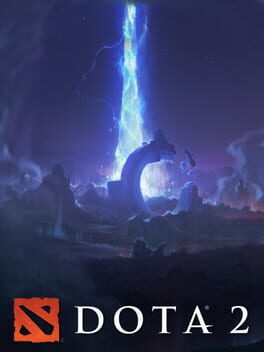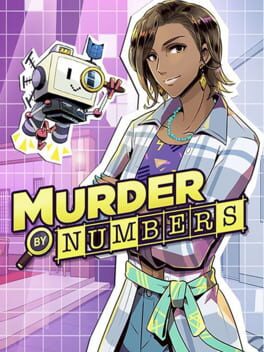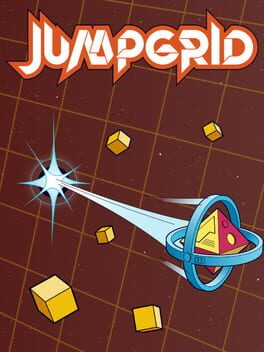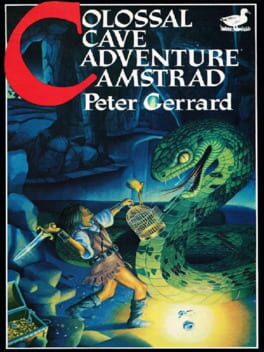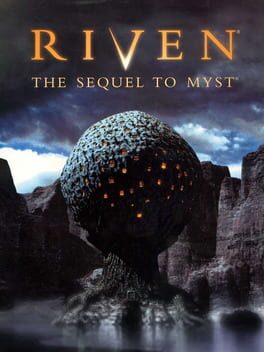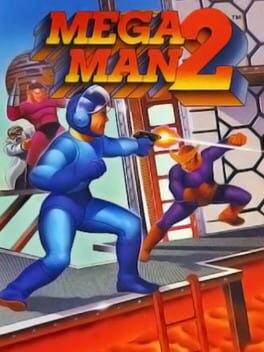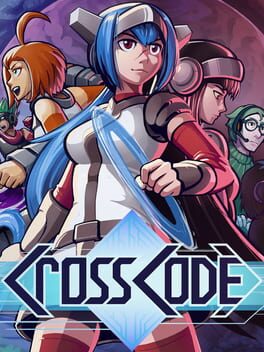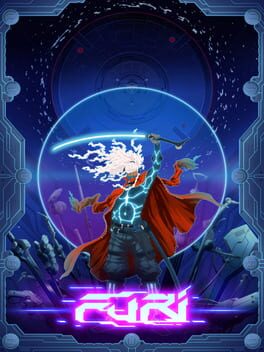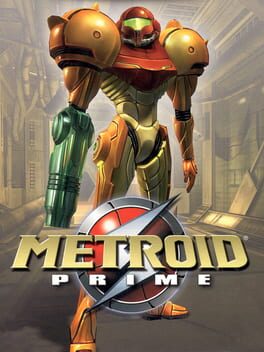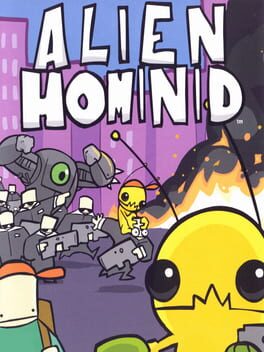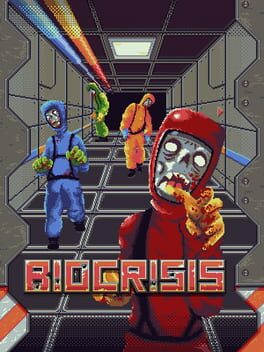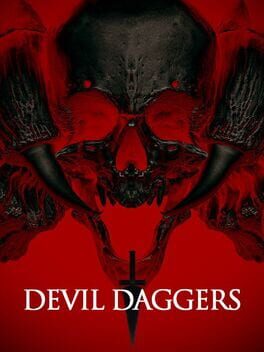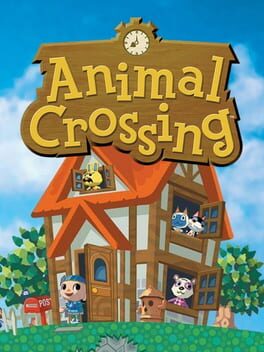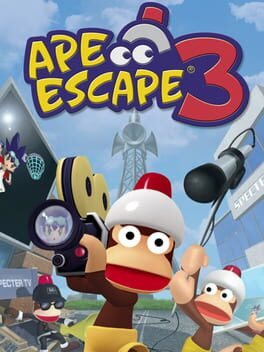bunbun
25 reviews liked by bunbun
Dota 2
2013
A game so impossibly perfect and all-encompassing that you shouldn't play it. Each game is an endless cascade of questions, both macro and intensely micro, each question morphing second by second as the nine other players start to try to answer their own questions, an endless, fractal, entrancing nightmare.
It Comes in Waves
2023
Outer Wilds
2019
Journey
2012
Philip Guedalla informs us that the novel The Approach to al-Mu'tasim by the Bombay barrister Mir Bahadur Ali ’is a rather uneasy combination of those Islamic allegories which never fail to impress their own translators, and of that brand of detective story which inevitably outdoes even Dr Watson and heightens the horror of human life as it is found in the most respectable boarding-houses of Brighton.' Before him, Mr Cecil Roberts had blasted Bahadur's book for ’its unaccountable double influence of Wilkie Collins and of the famed twelfth-century Persian, Ferid Eddin Attar' - a simple enough observation which Guedalla merely parrots, though in an angrier jargon. Essentially, both reviewers are in agreement, pointing out the book's detective-story mechanism and its undercurrent of mysticism. This hybridization may lead us to suspect a certain kinship with Chesterton; we shall presently find out, however, that no such affinity exists.
The first edition of The Approach to al-Mu'tasim appeared in Bombay towards the end of 1932. The paper on which the volume was issued, I am told, was almost newsprint; the jacket announced to the purchaser that the book was the first detective novel to be written by a native of Bombay City. Within a few months, four printings of a thousand copies each were sold out. The Bombay Quarterly Review, the Bombay Gazette, the Calcutta Review, the Hindustani Review (of Allahabad), and the Calcutta Englishman all sang its praises. Bahadur then brought out an illustrated edition, which he retitled The Conversation with the Man Called al-Mu'tasim and rather beautifully subtitled A Game with Shifting Mirrors. This is the edition which Victor Gollancz has just reissued in London, with a foreword by Dorothy L. Sayers and the omission - perhaps merciful - of the illustrations. It is this edition that I have at hand; I have not been able to obtain a copy of the earlier one, which I surmise may be a better book. I am drawn to this suspicion by an appendix summarizing the differences between the 1932 and the 1934 editions. Before attempting a discussion of the novel, it might be well to give some idea of the general plot.
Its central figure - whose name we are never told - is a law student in Bombay. Blasphemously, he disbelieves in the Islamic faith of his fathers, but, on the tenth night of the moon of Muharram, he finds himself in the midst of a civil disorder between Muslims and Hindus. It is a night of drums and prayers. The great paper canopies of the Muslim procession force their way through the heathen mob. A hail of Hindu bricks hurtles down from a roof terrace. A knife sinks into a belly. Someone - Muslim? Hindu? - dies and is trampled on. Three thousand men are fighting - stick against revolver, obscenity against curse, God the Indivisible against the many gods. Instinctively, the student freethinker joins in the battle. With his bare hands, he kills (or thinks he has killed) a Hindu. The Government police - mounted, thunderous, and barely awake - intervene, dealing out impartial lashes. The student flees, almost under the legs of the horses, heading for the farthest ends of town. He crosses two sets of railway lines, or the same lines twice. He scales the wall of an unkempt garden at one corner of which rises a circular tower. 'A lean and evil mob of mooncoloured hounds' lunges at him from the black rose-bushes. Pursued, he seeks refuge in the tower. He climbs an iron ladder - two or three rungs are missing - and on the flat roof, which has a dark pit in the middle, comes upon a squalid man in a squatting position, urinating vigorously by the light of the moon. The man confides to him that his profession is stealing gold teeth from the white-shrouded corpses that the Parsees leave on the roof of the tower. He says a number of other vile things and mentions, in passing, that fourteen nights have lapsed since he last cleansed himself with buffalo dung. He speaks with obvious anger of a band of horse thieves from Gujarat, 'eaters of dogs and lizards - men, in short, as abominable as the two of us’. Day is dawning. In the sky is a low flight of well-fed vultures. The student, in utter exhaustion, lies down to sleep. When he wakes up, the sun is high overhead and the thief is gone. Gone also are a couple of Trichinopoly cigars and a few silver rupees. Shaken by the events of the night before, the student decides to lose himself somewhere within the bounds of India. He knows he has shown himself capable of killing an infidel, but not of knowing with certainty whether the Muslim is more justified in his beliefs than the infidel. The mention of Gujarat haunts him, as does the name of a malka-sansi (a woman belonging to a caste of thieves) from Palanpur, many times favoured by the curses and hatred of the despoiler of corpses. He reasons that the anger of a man so thoroughly vile is in itself a kind of praise. He resolves - though rather hopelessly - to find her. He prays and sets out slowly and deliberately on his long journey. So ends the novel’s second chapter.
It is hardly possible to outline here the involved adventures that befall him in the remaining nineteen. There is a baffling pullulation of dramatis personae, to say nothing of a biography that seems to exhaust the range of the human spirit (running from infamy to mathematical speculation) or of a pilgrimage that covers the vast geography of India. The story begun in Bombay moves on into the lowlands of Palanpur, lingers for an evening and a night before the stone gates of Bikaner, tells of the death of a blind astrologer in a Benares sewer; the hero becomes involved in a conspiracy in a mazelike palace in Katmandu, prays and fornicates in the pestilential stench of the Machua Bazaar in Calcutta, sees the day born out of the sea from a law office in Madras, sees evenings die in the sea from a balcony in the state of Travancore, falters and kills in Indapur. The adventure closes its orbit of miles and years back in Bombay itself just a few yards away from the garden of the 'mooncoloured hounds’. The underlying plot is this: a man, the fugitive student freethinker we already know, falls among the lowest class of people and, in a kind of contest of evil-doing, takes up their ways. All at once, with the wonder and terror of Robinson Crusoe upon discovering the footprint of a man in the sand, he becomes aware of a sudden brief change in that world of ruthlessness - a certain tenderness, a moment of happiness, a forgiving silence in one of his loathsome companions. 'It was as though a stranger, a third and more subtle person, had entered into the conversation.' The hero knows that the scoundrel he is talking to is quite incapable of this unexpected turn; he therefore deduces that the man is echoing someone else, a friend, or the friend of a friend. Rethinking the problem, he arrives at the mysterious conclusion that 'somewhere on earth is a man from whom this light emanates; somewhere on earth a man exists who is equal to this light.’ The student decides to spend his life in search of him.
The story's outline is now plain: the tireless search for a human soul through the barely perceptible reflections cast by this soul in others - at first, the faint trace of a smile or of a word; in the end, the multiple branching splendours of reason, imagination, and righteousness. The nearer to al-Mu'tasim the men he examines are, the greater is their share of the divine, though it is understood that they are but mirrors. A mathematical analogy may be helpful here. Bahadur's teeming novel is an ascendant progression whose last term is the foreshadowed 'man called al-Mu'tasim'. Al-Mu'tasim's immediate predecessor is a Persian bookseller, an exceptionally happy, courteous man; the one before him, a saint. Finally, after many years, the student comes to a corridor 'at whose end is a door and a cheap beaded curtain, and behind the curtain a shining light'. The student claps his hands once or twice and asks for al-Mu'tasim. A man's voice - the unimaginable voice of al-Mu'tasim - invites him in. The student parts the curtain and steps forward. At this point, the novel ends.
If I am not mistaken, the proper handling of such a plot places the writer under two obligations. One, to abound richly in prophetic touches; the other, to make us feel that the person foreshadowed by these touches is more than a mere convention or phantom. Bahadur fulfils the first; how far he achieves the second, I wonder. In other words, the unheard and unseen al-Mu'tasim should leave us with the impression of a real character, not of a clutter of insipid superlatives. In the 1932 version, there are few supernatural touches; 'the man called al-Mu'tasim' is obviously a symbol, though he is not devoid of personal traits. Unfortunately, this literary good conduct did not last. In the 1934 version - the one I have read - the novel descends into allegory. Al-Mu'tasim is God, and the hero's various wanderings are in some way the journey of a soul on its ascending steps towards the divine union. There are a few regrettable details: a black Jew from Cochin speaks of al-Mu'tasim as having dark skin; a Christian describes him standing on a height with his arms spread open; a Red lama recalls him seated 'like that figure I modelled in yak butter and worshipped in the monastery of Tachilhunpo'. These statements seem to suggest a single God who reconciles himself to the many varieties of mankind. In my opinion, the idea is not greatly exciting. I will not say the same of another idea - the hint that the Almighty is also in search of Someone, and that Someone of Someone above him (or Someone simply indispensable and equal), and so on to the End (or, rather, Endlessness) of Time, or perhaps cyclically. Al-Mu'tasim (the name of that eighth Abbasid caliph who was victorious in eight battles, fathered eight sons and eight daughters, left eight thousand slaves, and ruled for a period of eight years, eight moons, and eight days) means etymologically 'The Seeker after Help'. In the 1932 version, the fact that the object of the pilgrimage was himself a pilgrim justified well enough the difficulty of finding him. The later version gives way to the quaint theology I have just mentioned. In the twentieth chapter, words attributed by the Persian bookseller to al-Mu'tasim are, perhaps, the mere heightening of others spoken by the hero; this and other hidden analogies may stand for the identity of the Seeker with the Sought. They may also stand for an influence of Man on the Divinity. Another chapter hints that al-Mu'tasim is the Hindu the student believes he has killed. Mir Bahadur Ali, as we have seen, cannot refrain from the grossest temptation of art - that of being a genius.
On reading over these pages, I fear I have not called sufficient attention to the book's many virtues. They include a number of fine distinctions. For example, a conversation in chapter nineteen in which one of the speakers, who is a friend of al-Mu'tasim, avoids pointing out the other man's sophisms 'in order not to be obviously in the right'.
-
It is considered admirable nowadays for a modern book to have its roots in an ancient one, since nobody (as Dr Johnson said) likes to owe anything to his contemporaries. The many but superficial contacts between Joyce's Ulysses and Homer's Odyssey continue to receive - I shall never know why - the hare-brained admiration of critics. The points of contact between Bahadur's novel and the celebrated Parliament of Birds by Farid ud-Din Attar have awakened the no less mysterious approval of London and even of Allahabad and Calcutta. As far as I can judge, the points of contact between the two works are not many. Other sources are present. Some inquisitor has listed certain analogies between the novel's opening scene and Kipling's story 'On the City Wall'. Bahadur admits this but argues that it would be highly abnormal if two descriptions of the tenth night of Muharram were quite unlike each other. Eliot, more to the point, is reminded of the seventy cantos of the unfinished allegory The Faerie Queene, in which the heroine, Gloriana, does not appear even once - a fault previously noted by Richard William Church (Spenser, 1879). With due humility, I suggest a possible remote forerunner, the Jerusalem Cabbalist Isaac Luria, who in the sixteenth century advanced the notion that the soul of an ancestor or a teacher may, in order to comfort or instruct him, enter into the soul of someone who has suffered misfortune. Ibbür is the name given to this variety of metempsychosis.
In the course of this review, I have referred to the Mantiq ut-Tair (Parliament of Birds) by the Persian mystic Farid al-Din Abu Talib Mohammad ibn-Ibraham Attar, who was killed by the soldiers of Tului, one of Genghis Khan's sons, during the sack of Nishapur. Perhaps it would be useful to summarize the poem. The distant king of birds, the Simurgh, drops one of his splendid feathers somewhere in the middle of China; on learning of this, the other birds, tired of their age-old anarchy, decide to seek him out. They know that the king's name means 'thirty birds'; they know that his castle lies in the Kaf, the range of mountains that rings the earth. Setting out on the almost endless adventure, they cross seven valleys or seas, the next to last bearing the name Bewilderment, the last, the name Annihilation. Many of the pilgrims desert; the journey takes its toll of the rest. Thirty, purified by suffering, reach the great peak of the Simurgh. At last they behold him; they realize that they are the Simurgh and that the Simurgh is each of them and all of them. (Plotinus [Enneads, V, 8, 4] also posits a divine extension of the principle of identity: 'All things in the intelligible heavens are in all places. Any one thing is all other things. The sun is all the stars, and each star is all the other stars and the sun.') The Mantiq ut-Tair has been translated into French by Garcin de Tassy; parts of it into English by Edward FitzGerald. For this footnote, I have consulted the tenth volume of Burton's Arabian Nights and Margaret Smith's study The Persian Mystics: Attar (1932).
The first edition of The Approach to al-Mu'tasim appeared in Bombay towards the end of 1932. The paper on which the volume was issued, I am told, was almost newsprint; the jacket announced to the purchaser that the book was the first detective novel to be written by a native of Bombay City. Within a few months, four printings of a thousand copies each were sold out. The Bombay Quarterly Review, the Bombay Gazette, the Calcutta Review, the Hindustani Review (of Allahabad), and the Calcutta Englishman all sang its praises. Bahadur then brought out an illustrated edition, which he retitled The Conversation with the Man Called al-Mu'tasim and rather beautifully subtitled A Game with Shifting Mirrors. This is the edition which Victor Gollancz has just reissued in London, with a foreword by Dorothy L. Sayers and the omission - perhaps merciful - of the illustrations. It is this edition that I have at hand; I have not been able to obtain a copy of the earlier one, which I surmise may be a better book. I am drawn to this suspicion by an appendix summarizing the differences between the 1932 and the 1934 editions. Before attempting a discussion of the novel, it might be well to give some idea of the general plot.
Its central figure - whose name we are never told - is a law student in Bombay. Blasphemously, he disbelieves in the Islamic faith of his fathers, but, on the tenth night of the moon of Muharram, he finds himself in the midst of a civil disorder between Muslims and Hindus. It is a night of drums and prayers. The great paper canopies of the Muslim procession force their way through the heathen mob. A hail of Hindu bricks hurtles down from a roof terrace. A knife sinks into a belly. Someone - Muslim? Hindu? - dies and is trampled on. Three thousand men are fighting - stick against revolver, obscenity against curse, God the Indivisible against the many gods. Instinctively, the student freethinker joins in the battle. With his bare hands, he kills (or thinks he has killed) a Hindu. The Government police - mounted, thunderous, and barely awake - intervene, dealing out impartial lashes. The student flees, almost under the legs of the horses, heading for the farthest ends of town. He crosses two sets of railway lines, or the same lines twice. He scales the wall of an unkempt garden at one corner of which rises a circular tower. 'A lean and evil mob of mooncoloured hounds' lunges at him from the black rose-bushes. Pursued, he seeks refuge in the tower. He climbs an iron ladder - two or three rungs are missing - and on the flat roof, which has a dark pit in the middle, comes upon a squalid man in a squatting position, urinating vigorously by the light of the moon. The man confides to him that his profession is stealing gold teeth from the white-shrouded corpses that the Parsees leave on the roof of the tower. He says a number of other vile things and mentions, in passing, that fourteen nights have lapsed since he last cleansed himself with buffalo dung. He speaks with obvious anger of a band of horse thieves from Gujarat, 'eaters of dogs and lizards - men, in short, as abominable as the two of us’. Day is dawning. In the sky is a low flight of well-fed vultures. The student, in utter exhaustion, lies down to sleep. When he wakes up, the sun is high overhead and the thief is gone. Gone also are a couple of Trichinopoly cigars and a few silver rupees. Shaken by the events of the night before, the student decides to lose himself somewhere within the bounds of India. He knows he has shown himself capable of killing an infidel, but not of knowing with certainty whether the Muslim is more justified in his beliefs than the infidel. The mention of Gujarat haunts him, as does the name of a malka-sansi (a woman belonging to a caste of thieves) from Palanpur, many times favoured by the curses and hatred of the despoiler of corpses. He reasons that the anger of a man so thoroughly vile is in itself a kind of praise. He resolves - though rather hopelessly - to find her. He prays and sets out slowly and deliberately on his long journey. So ends the novel’s second chapter.
It is hardly possible to outline here the involved adventures that befall him in the remaining nineteen. There is a baffling pullulation of dramatis personae, to say nothing of a biography that seems to exhaust the range of the human spirit (running from infamy to mathematical speculation) or of a pilgrimage that covers the vast geography of India. The story begun in Bombay moves on into the lowlands of Palanpur, lingers for an evening and a night before the stone gates of Bikaner, tells of the death of a blind astrologer in a Benares sewer; the hero becomes involved in a conspiracy in a mazelike palace in Katmandu, prays and fornicates in the pestilential stench of the Machua Bazaar in Calcutta, sees the day born out of the sea from a law office in Madras, sees evenings die in the sea from a balcony in the state of Travancore, falters and kills in Indapur. The adventure closes its orbit of miles and years back in Bombay itself just a few yards away from the garden of the 'mooncoloured hounds’. The underlying plot is this: a man, the fugitive student freethinker we already know, falls among the lowest class of people and, in a kind of contest of evil-doing, takes up their ways. All at once, with the wonder and terror of Robinson Crusoe upon discovering the footprint of a man in the sand, he becomes aware of a sudden brief change in that world of ruthlessness - a certain tenderness, a moment of happiness, a forgiving silence in one of his loathsome companions. 'It was as though a stranger, a third and more subtle person, had entered into the conversation.' The hero knows that the scoundrel he is talking to is quite incapable of this unexpected turn; he therefore deduces that the man is echoing someone else, a friend, or the friend of a friend. Rethinking the problem, he arrives at the mysterious conclusion that 'somewhere on earth is a man from whom this light emanates; somewhere on earth a man exists who is equal to this light.’ The student decides to spend his life in search of him.
The story's outline is now plain: the tireless search for a human soul through the barely perceptible reflections cast by this soul in others - at first, the faint trace of a smile or of a word; in the end, the multiple branching splendours of reason, imagination, and righteousness. The nearer to al-Mu'tasim the men he examines are, the greater is their share of the divine, though it is understood that they are but mirrors. A mathematical analogy may be helpful here. Bahadur's teeming novel is an ascendant progression whose last term is the foreshadowed 'man called al-Mu'tasim'. Al-Mu'tasim's immediate predecessor is a Persian bookseller, an exceptionally happy, courteous man; the one before him, a saint. Finally, after many years, the student comes to a corridor 'at whose end is a door and a cheap beaded curtain, and behind the curtain a shining light'. The student claps his hands once or twice and asks for al-Mu'tasim. A man's voice - the unimaginable voice of al-Mu'tasim - invites him in. The student parts the curtain and steps forward. At this point, the novel ends.
If I am not mistaken, the proper handling of such a plot places the writer under two obligations. One, to abound richly in prophetic touches; the other, to make us feel that the person foreshadowed by these touches is more than a mere convention or phantom. Bahadur fulfils the first; how far he achieves the second, I wonder. In other words, the unheard and unseen al-Mu'tasim should leave us with the impression of a real character, not of a clutter of insipid superlatives. In the 1932 version, there are few supernatural touches; 'the man called al-Mu'tasim' is obviously a symbol, though he is not devoid of personal traits. Unfortunately, this literary good conduct did not last. In the 1934 version - the one I have read - the novel descends into allegory. Al-Mu'tasim is God, and the hero's various wanderings are in some way the journey of a soul on its ascending steps towards the divine union. There are a few regrettable details: a black Jew from Cochin speaks of al-Mu'tasim as having dark skin; a Christian describes him standing on a height with his arms spread open; a Red lama recalls him seated 'like that figure I modelled in yak butter and worshipped in the monastery of Tachilhunpo'. These statements seem to suggest a single God who reconciles himself to the many varieties of mankind. In my opinion, the idea is not greatly exciting. I will not say the same of another idea - the hint that the Almighty is also in search of Someone, and that Someone of Someone above him (or Someone simply indispensable and equal), and so on to the End (or, rather, Endlessness) of Time, or perhaps cyclically. Al-Mu'tasim (the name of that eighth Abbasid caliph who was victorious in eight battles, fathered eight sons and eight daughters, left eight thousand slaves, and ruled for a period of eight years, eight moons, and eight days) means etymologically 'The Seeker after Help'. In the 1932 version, the fact that the object of the pilgrimage was himself a pilgrim justified well enough the difficulty of finding him. The later version gives way to the quaint theology I have just mentioned. In the twentieth chapter, words attributed by the Persian bookseller to al-Mu'tasim are, perhaps, the mere heightening of others spoken by the hero; this and other hidden analogies may stand for the identity of the Seeker with the Sought. They may also stand for an influence of Man on the Divinity. Another chapter hints that al-Mu'tasim is the Hindu the student believes he has killed. Mir Bahadur Ali, as we have seen, cannot refrain from the grossest temptation of art - that of being a genius.
On reading over these pages, I fear I have not called sufficient attention to the book's many virtues. They include a number of fine distinctions. For example, a conversation in chapter nineteen in which one of the speakers, who is a friend of al-Mu'tasim, avoids pointing out the other man's sophisms 'in order not to be obviously in the right'.
-
It is considered admirable nowadays for a modern book to have its roots in an ancient one, since nobody (as Dr Johnson said) likes to owe anything to his contemporaries. The many but superficial contacts between Joyce's Ulysses and Homer's Odyssey continue to receive - I shall never know why - the hare-brained admiration of critics. The points of contact between Bahadur's novel and the celebrated Parliament of Birds by Farid ud-Din Attar have awakened the no less mysterious approval of London and even of Allahabad and Calcutta. As far as I can judge, the points of contact between the two works are not many. Other sources are present. Some inquisitor has listed certain analogies between the novel's opening scene and Kipling's story 'On the City Wall'. Bahadur admits this but argues that it would be highly abnormal if two descriptions of the tenth night of Muharram were quite unlike each other. Eliot, more to the point, is reminded of the seventy cantos of the unfinished allegory The Faerie Queene, in which the heroine, Gloriana, does not appear even once - a fault previously noted by Richard William Church (Spenser, 1879). With due humility, I suggest a possible remote forerunner, the Jerusalem Cabbalist Isaac Luria, who in the sixteenth century advanced the notion that the soul of an ancestor or a teacher may, in order to comfort or instruct him, enter into the soul of someone who has suffered misfortune. Ibbür is the name given to this variety of metempsychosis.
In the course of this review, I have referred to the Mantiq ut-Tair (Parliament of Birds) by the Persian mystic Farid al-Din Abu Talib Mohammad ibn-Ibraham Attar, who was killed by the soldiers of Tului, one of Genghis Khan's sons, during the sack of Nishapur. Perhaps it would be useful to summarize the poem. The distant king of birds, the Simurgh, drops one of his splendid feathers somewhere in the middle of China; on learning of this, the other birds, tired of their age-old anarchy, decide to seek him out. They know that the king's name means 'thirty birds'; they know that his castle lies in the Kaf, the range of mountains that rings the earth. Setting out on the almost endless adventure, they cross seven valleys or seas, the next to last bearing the name Bewilderment, the last, the name Annihilation. Many of the pilgrims desert; the journey takes its toll of the rest. Thirty, purified by suffering, reach the great peak of the Simurgh. At last they behold him; they realize that they are the Simurgh and that the Simurgh is each of them and all of them. (Plotinus [Enneads, V, 8, 4] also posits a divine extension of the principle of identity: 'All things in the intelligible heavens are in all places. Any one thing is all other things. The sun is all the stars, and each star is all the other stars and the sun.') The Mantiq ut-Tair has been translated into French by Garcin de Tassy; parts of it into English by Edward FitzGerald. For this footnote, I have consulted the tenth volume of Burton's Arabian Nights and Margaret Smith's study The Persian Mystics: Attar (1932).
Murder by Numbers
2020
I love the concept of a picross / murder mystery game, and that more or less pays off with Murder by Numbers. It's a very solid picross game, notably with good controller support so I could play it on my Steam Deck. The puzzles are a little slow to ramp up in difficulty but they do get tougher towards the end. The only real gameplay mechanics aside from normal picross are having to scan the environment for clues, which unlocks new puzzles to complete and progress through the game, and a timed hacking minigame that comes up a few times where you have to rapidly solve multiple tiny picross puzzles on a timer, which is quite fun.
The murder mystery side of the game is more just a visual novel, you're not making any substantial choices or doing much real detective work here. The few times it does ask you to come to a conclusion there's no punishment for guessing wrong and you just get to pick again until you find the correct path for the story. That said, I found these parts of the game surprisingly charming. I'm not normally one for visual novels, but something about this clicked with me, perhaps just ingesting it in small bits between the puzzle sections. The story doesn't really go anywhere surprising but it's fun enough to be along for the ride, and the characters are pretty well done.
I do have two big complaints that kept me from enjoying this more. The first is the music situation. The soundtrack for the game is actually quite good, but it's also rather short, and only a smaller selection of music can be played during puzzles. This is also a minor problem because puzzles that come up in more tense situations still use the lighter, more upbeat music from earlier in the game. The bigger problem here is that there's only one volume setting for music, you can't turn off the music during puzzles without also turning it off during the story. I wanted it on during the story and thought it added a lot to those parts, but got really annoyed with it during the puzzles and ended up toggling it off and on throughout the second half or so of the game. You also notably can't open the pause menu once you're in a cutscene/dialogue, so even manually turning it on for story moments is out of the question unless you remember to do it before the end of every single puzzle. This was a pretty big annoyance over a roughly 40 hour game, and could be solved very easily I think, hopefully a setting gets patched in at some point.
The second complaint is about how the side content in the game is handled. There are four main cases you solve in the game, and for each one you get a rating that goes up as you solve the main puzzles without making mistakes or using hints. The higher your rating, the more side puzzles you unlock, and if you get an S rank and complete all the side puzzles for a case you get a bonus cutscene. These are actually quite important to the story and fill in some important info, which in theory I wouldn't mind because I'm playing this game for the puzzles and didn't mind doing the extra ones. This became an issue when I finished one of the cases, assuming there was just another puzzle at the end that would bump me up to S rank, but it turns out I somehow missed one. After you complete a case you cannot go back to the areas from it to search for more clues, the cases are almost treated like separate playthroughs and unless you manually make safety saves, you'll have to replay the entire case (a quarter of the main game) from the start to revisit any part of it. I ended up just looking up the cutscene I missed on youtube, and I only missed out on something like 2 side puzzles because of this, but it was very frustrating and easily avoidable.
Those rants aside, I had a really good time with this overall. It's easy enough to pick up if you're new to picross, but does provide some more challenging puzzles by the end even if the ramp up is a bit slow. The story is also fun and I think most people would enjoy it, so I'd still give this a solid recommendation if it looks interesting to you.
The murder mystery side of the game is more just a visual novel, you're not making any substantial choices or doing much real detective work here. The few times it does ask you to come to a conclusion there's no punishment for guessing wrong and you just get to pick again until you find the correct path for the story. That said, I found these parts of the game surprisingly charming. I'm not normally one for visual novels, but something about this clicked with me, perhaps just ingesting it in small bits between the puzzle sections. The story doesn't really go anywhere surprising but it's fun enough to be along for the ride, and the characters are pretty well done.
I do have two big complaints that kept me from enjoying this more. The first is the music situation. The soundtrack for the game is actually quite good, but it's also rather short, and only a smaller selection of music can be played during puzzles. This is also a minor problem because puzzles that come up in more tense situations still use the lighter, more upbeat music from earlier in the game. The bigger problem here is that there's only one volume setting for music, you can't turn off the music during puzzles without also turning it off during the story. I wanted it on during the story and thought it added a lot to those parts, but got really annoyed with it during the puzzles and ended up toggling it off and on throughout the second half or so of the game. You also notably can't open the pause menu once you're in a cutscene/dialogue, so even manually turning it on for story moments is out of the question unless you remember to do it before the end of every single puzzle. This was a pretty big annoyance over a roughly 40 hour game, and could be solved very easily I think, hopefully a setting gets patched in at some point.
The second complaint is about how the side content in the game is handled. There are four main cases you solve in the game, and for each one you get a rating that goes up as you solve the main puzzles without making mistakes or using hints. The higher your rating, the more side puzzles you unlock, and if you get an S rank and complete all the side puzzles for a case you get a bonus cutscene. These are actually quite important to the story and fill in some important info, which in theory I wouldn't mind because I'm playing this game for the puzzles and didn't mind doing the extra ones. This became an issue when I finished one of the cases, assuming there was just another puzzle at the end that would bump me up to S rank, but it turns out I somehow missed one. After you complete a case you cannot go back to the areas from it to search for more clues, the cases are almost treated like separate playthroughs and unless you manually make safety saves, you'll have to replay the entire case (a quarter of the main game) from the start to revisit any part of it. I ended up just looking up the cutscene I missed on youtube, and I only missed out on something like 2 side puzzles because of this, but it was very frustrating and easily avoidable.
Those rants aside, I had a really good time with this overall. It's easy enough to pick up if you're new to picross, but does provide some more challenging puzzles by the end even if the ramp up is a bit slow. The story is also fun and I think most people would enjoy it, so I'd still give this a solid recommendation if it looks interesting to you.
Tunic
2022
I think its OK to cheat at video games. Probably not chess (#magnusisinnocent) or other competitive ones, but like, I think if you're stuck on a puzzle, and you've given it the old college try, I think there's nothing wrong with googling "spoderman how do i shot web" every once in a while. If you're legitimately stuck, what else are you going to do otherwise? Just drop the game? That's dumb.
I tried really hard not to cheat at Tunic. Really hard. I did succumb, a few times, and a few more times than that, I tried to succumb and just look up the answer but I failed to phrase it right and didn't find anything out. What's cool about Tunic is that it plays into the impulse of looking stuff up by giving you that nice old Manual. Making you find that manual, piece by piece--you have to literally build your understanding of the game page by page. Once you've got it all together, you can figure out what questions you're really asking.
Tunic sells itself as a Zelda or Soulslike; moreso than those it is a Fezlike, but even more than that this game is a Flower, Sun, and Rain-like. The game doesn't really begin until you are reading through the manual, back and forth, digging for secrets. I don't really have any idea what any of the lore in this game meant, or what any of the weird runic language is saying; what I do know is that I beat this game, and what it means to do that. And figuring that out ruled. The puzzles in this game are labyrinths, and what a joy it is to walk them.
I tried really hard not to cheat at Tunic. Really hard. I did succumb, a few times, and a few more times than that, I tried to succumb and just look up the answer but I failed to phrase it right and didn't find anything out. What's cool about Tunic is that it plays into the impulse of looking stuff up by giving you that nice old Manual. Making you find that manual, piece by piece--you have to literally build your understanding of the game page by page. Once you've got it all together, you can figure out what questions you're really asking.
Tunic sells itself as a Zelda or Soulslike; moreso than those it is a Fezlike, but even more than that this game is a Flower, Sun, and Rain-like. The game doesn't really begin until you are reading through the manual, back and forth, digging for secrets. I don't really have any idea what any of the lore in this game meant, or what any of the weird runic language is saying; what I do know is that I beat this game, and what it means to do that. And figuring that out ruled. The puzzles in this game are labyrinths, and what a joy it is to walk them.
Jumpgrid
2019
Holy shit, what an absolute joy of a game. This is perfectly up my alley, instantly snappy movement, simple controls but a lot of skill involved, single screen and arcade-like. The levels here are so creative throughout, it could have gotten away with so much less, or with reusing concepts more, but there are amazing level concepts that are used once in a level you can beat in 10 seconds and I love that. The pace of this was enthralling and kept me going through the whole thing in one sitting. The last world in particular was a blast, it does get tougher but it's not just a challenge of existing ideas, it breaks all of the rules and pushes the game to its limits. Damn, what an awesome surprise this was. Go play this right now.
Midnight Ultra
2017
Pretty decent boomer shooter. The guns are fun, melee not so much but there's a secondary weapon that's actually ranged, so just use that. The style is neat, but also hurt my eyes a bit, and made some of the platforming sections hard to see. There are different color schemes but you can't change them without backing out to the main menu so I didn't actually end up trying those, maybe that helps. Fun and short game though, worth a try.
Mother 3
2006
This review contains spoilers
I don't like JRPGs. There are a handful of exceptions, but as a genre I find the design tropes boring if not straight up bad. The first half or so of Mother 3 had me convinced that it was different, and if it kept to that course it may have ended up as my favorite in the genre (or close to it). Unfortunately, the latter half leans hard into JRPG tropes and seems to miss the point on many things that I thought it was brilliant for doing in the first place. I've struggled with putting into words my issues with this genre of game, but finishing this Big and Important one that's been on my backlog forever seems like the best time to try and do it.
I think the biggest issue I have with this type of game is the balance of combat. Having a large amount of options in menu-based combat quickly gets overwhelming, so strategic input from the player is usually limited. In most JRPGs there's really no other type of skill involved, just patience for grinding. On the other hand, if the game is too easy then the combat feels like a chore, and I often find myself wishing games like this were just story-focused walking sims. Failing usually isn't fun, and just leads to repeating the same content, so it's a fine line to tread of staying engaging and not turning into a "mash A through combat" game, but also not being so difficult that becomes annoying, forces every player into a single broken strategy, or worst of all leads to grinding. Typically the best parts of these games are the boss fights, well crafted experiences where you get to see and hear something new, and at least in good cases a new unique strategy is needed/helpful for winning. Bear with me, because I can already hear the groans of people reading this, but Undertale is a great example of what I'm looking for out of an RPG. Unique combat experiences that aren't really focused on stats or gear, but more so showing you new ideas and then moving on to the next thing. I realize that I'm writing about playing Mother 3 for the first time in 2022, and many later games including Undertale took inspiration from it, but I want to talk about the ways in which it succeeds and fails at that in my experience.
Early on there are many cool ideas here for how to spice up combat, from the rhythm battle mechanic to the health counters. Enemies are varied and amusing, and the boss fights feel like tight, well-crafted experiences. Later on this falls apart somewhat, but for a while I was loving this. I think it succeeds in large part due to the structure of switching between character perspectives (which I also loved for the story, but I'll get to that later). This not only introduces you to new party members and mechanics often enough that they don't get stale, but these shorter, linear chapters allow the developers to keep a tight grasp on the player's state. The balance of JRPGs often feels like it's at odds with the near universally present XP systems and upgradable gear, and Mother 3 solves that for a good chunk of time by controlling what you're given access to without feeling restrictive. It also helps that each of these characters you play as has a unique theme and take on the mechanics of combat. These separate, smaller stories are intriguing both in narrative in gameplay, and seeing how they come together later is a great driving force for the first half of the game.
Unfortunately, this didn't last forever. The second half of the game (which I'm defining as after the timeskip at the beginning of Chapter 4, it's probably not actually half of the time the game takes but it's a clear dividing point in the game design and story) opens up with an explanation of a currency system. I was already disappointed, as I was enjoying the lack of one. Items before this point were kept simpler, and knowing exactly what you'd have access to surely helped with the balance. Adding currency and shops serves the narrative, but adds unnecessary complexity to the gameplay balance. I could see the argument that it being unnecessary and an annoyance even ties into the story's themes, but I think the game makes that point well enough without the gameplay ramifications. I'm sure it's easy when designing a game like this to just say "other games did it, right?", but Mother 3 demonstrates in its opening chapters that it understands how tightly designed a game can be without that. This idea underlines my thoughts through the rest of the game, "why did they change this after doing it so well earlier?" The rhythm combat and HP counter mechanic lose importance and start to feel dull. The former because there's too many enemies that you can't put to sleep to learn the rhythm or it's just not worth it to do so, and the many of the songs became too complicated for me to keep up more than a few beats. The counter mechanic becomes an annoyance with larger HP totals when you're often sitting there waiting on a heal to finish before letting the enemy attack, or you're trying to mash out commands before a party member dies but the textboxes take too long. You can buy weapon upgrades at shops, but when this is worth doing isn't very apparent until after the fact. Refighting bosses earlier in the game would skip some of their dialogue/cutscene on repeat attempts to speed it up, and at some point they just give up on doing this. Inventory management becomes a chore, and the Inventory Guy is never nearby when you need him. There were some bosses later in the game that I just had to grind for because even using the best strategy at my current level wasn't enough. The separation of save points and hot springs for healing makes little sense when there's no hot spring near a pre-boss save point, encouraging you to just die on your first attempt. There's so many things like this where I thought this game was better and it just falls backwards into the same problems I have with so many other games.
That's certainly not to say this is a bad game, I enjoyed my time with it a lot even in most of those later parts. It does have a ton of content to show you that's all very charming and funny, and I can totally see how this helped spawn the subgenre of CharmPGs, but it feels more genuine in a way that many of those don't. In addition to this charm of the style and writing, the music was a big driving force in my interest to play this, as well as my motivation to continue playing throughout. I don't have a whole lot to say about it other than it's hands down the best soundtrack on the GBA. There's also some cool divergences from the main gameplay, which even if they're hit (the lab section) or miss (underwater) I admire the attempt to mix it up and didn't have a better spot to mention that.
I largely have positive things to say about the story, but it does stumble in a couple of places. Moving away from the perspective shifts of the first half entirely is a mistake in my opinion. On top of enjoying it for the gameplay, I think it would have greatly benefitted the pacing to have some more of these sprinkled throughout the back half as a break from the full-party gameplay with the normal group of characters. Porky's introduction and importance to the story are also questionable. Most people playing this have probably played Earthbound, but I found it too tedious to stick with. I don't know much beyond Porky being an antagonist in that game as well, but taking this story on its own he's introduced too late (and mostly explained through an exposition dump) and just kind of distracts from the main narrative in my opinion. It would have been fine just leaving Fassad and the Masked Man as the main antagonists. I also wish there was more time spent in New Pork City, the last chapter of the game there is pretty rushed and that probably doesn't help with Porky feeling underdeveloped. There's also a story disconnect between the halves of the game with the focus on the Egg of Light, which is hardly used once it's obtained, and its importance only explained later in the exposition dump I mentioned. I also think Lucas as a main character is a little too bland and too much of a self-insert or blank slate character. I prefer main characters in RPGs that are well defined and let you roleplay as them, and there's really none of that with Lucas. There's also a lot of positives to the story as well though. I did love the perspective changing between chapters while that was going on and it was a great way to introduce the wide cast of characters. Even if this isn't kept up, bringing back characters that were out of the story for a while still benefits from those early sections. The variety in locations and scope of the story is impressive and fun. I mentioned above, but the writing is consistently charming and funny. The ending was also pretty well executed and emotionally touching, and the use of musical motifs tying into the story there was cool even if it was probably more notable at the time than it is today with many more games trying to do that.
While I've got a lot of smaller complaints and this game isn't as perfect as I thought it might be for a while, it's still one of the best experiences I've had with a JRPG. It was actually fun enough for me to finish, which I often don't end up doing with these. I was a bit sad when it was over, as this had become a regular before bedtime game for me and was very comfy to play an hour of at the end of the day. I hope I got my message across of what I think this and future games could do better, but over time I imagine my annoyances with this will fade and I'll be left with the positive memories of this experience with it.
I think the biggest issue I have with this type of game is the balance of combat. Having a large amount of options in menu-based combat quickly gets overwhelming, so strategic input from the player is usually limited. In most JRPGs there's really no other type of skill involved, just patience for grinding. On the other hand, if the game is too easy then the combat feels like a chore, and I often find myself wishing games like this were just story-focused walking sims. Failing usually isn't fun, and just leads to repeating the same content, so it's a fine line to tread of staying engaging and not turning into a "mash A through combat" game, but also not being so difficult that becomes annoying, forces every player into a single broken strategy, or worst of all leads to grinding. Typically the best parts of these games are the boss fights, well crafted experiences where you get to see and hear something new, and at least in good cases a new unique strategy is needed/helpful for winning. Bear with me, because I can already hear the groans of people reading this, but Undertale is a great example of what I'm looking for out of an RPG. Unique combat experiences that aren't really focused on stats or gear, but more so showing you new ideas and then moving on to the next thing. I realize that I'm writing about playing Mother 3 for the first time in 2022, and many later games including Undertale took inspiration from it, but I want to talk about the ways in which it succeeds and fails at that in my experience.
Early on there are many cool ideas here for how to spice up combat, from the rhythm battle mechanic to the health counters. Enemies are varied and amusing, and the boss fights feel like tight, well-crafted experiences. Later on this falls apart somewhat, but for a while I was loving this. I think it succeeds in large part due to the structure of switching between character perspectives (which I also loved for the story, but I'll get to that later). This not only introduces you to new party members and mechanics often enough that they don't get stale, but these shorter, linear chapters allow the developers to keep a tight grasp on the player's state. The balance of JRPGs often feels like it's at odds with the near universally present XP systems and upgradable gear, and Mother 3 solves that for a good chunk of time by controlling what you're given access to without feeling restrictive. It also helps that each of these characters you play as has a unique theme and take on the mechanics of combat. These separate, smaller stories are intriguing both in narrative in gameplay, and seeing how they come together later is a great driving force for the first half of the game.
Unfortunately, this didn't last forever. The second half of the game (which I'm defining as after the timeskip at the beginning of Chapter 4, it's probably not actually half of the time the game takes but it's a clear dividing point in the game design and story) opens up with an explanation of a currency system. I was already disappointed, as I was enjoying the lack of one. Items before this point were kept simpler, and knowing exactly what you'd have access to surely helped with the balance. Adding currency and shops serves the narrative, but adds unnecessary complexity to the gameplay balance. I could see the argument that it being unnecessary and an annoyance even ties into the story's themes, but I think the game makes that point well enough without the gameplay ramifications. I'm sure it's easy when designing a game like this to just say "other games did it, right?", but Mother 3 demonstrates in its opening chapters that it understands how tightly designed a game can be without that. This idea underlines my thoughts through the rest of the game, "why did they change this after doing it so well earlier?" The rhythm combat and HP counter mechanic lose importance and start to feel dull. The former because there's too many enemies that you can't put to sleep to learn the rhythm or it's just not worth it to do so, and the many of the songs became too complicated for me to keep up more than a few beats. The counter mechanic becomes an annoyance with larger HP totals when you're often sitting there waiting on a heal to finish before letting the enemy attack, or you're trying to mash out commands before a party member dies but the textboxes take too long. You can buy weapon upgrades at shops, but when this is worth doing isn't very apparent until after the fact. Refighting bosses earlier in the game would skip some of their dialogue/cutscene on repeat attempts to speed it up, and at some point they just give up on doing this. Inventory management becomes a chore, and the Inventory Guy is never nearby when you need him. There were some bosses later in the game that I just had to grind for because even using the best strategy at my current level wasn't enough. The separation of save points and hot springs for healing makes little sense when there's no hot spring near a pre-boss save point, encouraging you to just die on your first attempt. There's so many things like this where I thought this game was better and it just falls backwards into the same problems I have with so many other games.
That's certainly not to say this is a bad game, I enjoyed my time with it a lot even in most of those later parts. It does have a ton of content to show you that's all very charming and funny, and I can totally see how this helped spawn the subgenre of CharmPGs, but it feels more genuine in a way that many of those don't. In addition to this charm of the style and writing, the music was a big driving force in my interest to play this, as well as my motivation to continue playing throughout. I don't have a whole lot to say about it other than it's hands down the best soundtrack on the GBA. There's also some cool divergences from the main gameplay, which even if they're hit (the lab section) or miss (underwater) I admire the attempt to mix it up and didn't have a better spot to mention that.
I largely have positive things to say about the story, but it does stumble in a couple of places. Moving away from the perspective shifts of the first half entirely is a mistake in my opinion. On top of enjoying it for the gameplay, I think it would have greatly benefitted the pacing to have some more of these sprinkled throughout the back half as a break from the full-party gameplay with the normal group of characters. Porky's introduction and importance to the story are also questionable. Most people playing this have probably played Earthbound, but I found it too tedious to stick with. I don't know much beyond Porky being an antagonist in that game as well, but taking this story on its own he's introduced too late (and mostly explained through an exposition dump) and just kind of distracts from the main narrative in my opinion. It would have been fine just leaving Fassad and the Masked Man as the main antagonists. I also wish there was more time spent in New Pork City, the last chapter of the game there is pretty rushed and that probably doesn't help with Porky feeling underdeveloped. There's also a story disconnect between the halves of the game with the focus on the Egg of Light, which is hardly used once it's obtained, and its importance only explained later in the exposition dump I mentioned. I also think Lucas as a main character is a little too bland and too much of a self-insert or blank slate character. I prefer main characters in RPGs that are well defined and let you roleplay as them, and there's really none of that with Lucas. There's also a lot of positives to the story as well though. I did love the perspective changing between chapters while that was going on and it was a great way to introduce the wide cast of characters. Even if this isn't kept up, bringing back characters that were out of the story for a while still benefits from those early sections. The variety in locations and scope of the story is impressive and fun. I mentioned above, but the writing is consistently charming and funny. The ending was also pretty well executed and emotionally touching, and the use of musical motifs tying into the story there was cool even if it was probably more notable at the time than it is today with many more games trying to do that.
While I've got a lot of smaller complaints and this game isn't as perfect as I thought it might be for a while, it's still one of the best experiences I've had with a JRPG. It was actually fun enough for me to finish, which I often don't end up doing with these. I was a bit sad when it was over, as this had become a regular before bedtime game for me and was very comfy to play an hour of at the end of the day. I hope I got my message across of what I think this and future games could do better, but over time I imagine my annoyances with this will fade and I'll be left with the positive memories of this experience with it.
Resident Evil 4
2011
"For Resident Evil 4, I actually didn't stop my frenzy myself. I wanted a producer to step in and stop it for me," - Shinji Mikami
resident evil 4's gameplay mechanics can be summed up as the following: you have four different main gun types accompanied by grenades. enemies walk up slowly towards you with a few different weapon types, and to shoot them you must stop in place and take aim in an over-the-shoulder perspective. generally with multiple enemies, the goal is to stagger one and then run up and kick it, which not only gives leon copious I-frames but also serves as an AoE to any surrounding enemies. the handgun generally serves as your bread-and-butter choice in most close-quarters situations, while the shotgun clears out groups quickly, the rifle can eliminate precise long-distance targets, and the TMP allows a low-damage spray-and-pray solution for specific high-density situations. leon comes equipped with a knife at all times that can quickly kill downed enemies without expending ammo as quickly as well as open item crates strewn across the world. the majority of enemies are identical "ganados" fodder which can wield a variety of weapons, and can generally be taken down quickly with headshots. however, after a ganados's head explodes, there is a potential for a dangerous parasite "los plagas" to extrude from the wound, which can attack from range and generally requires high-powered weaponry (or a flash grenade) in order to kill. with all of this in mind, the core tenets of gameplay consist of keeping leon a comfortable distance from enemies, setting up AoE opportunities when possible, and strategically prioritizing highly-dangerous targets with complementary weapon selections.
that's the "gameplay" in a nutshell. it's a bit like saying super mario bros. 3 is a "game where the player must traverse from platform to platform via jumping, while analyzing the hazard space for the safest path..." blah blah blah. for so many games I feel like you can summarize the core experience with the mechanical interaction description, but when you get to something as unconventionally designed in terms of scenario as re4, it sort of defies being encapsulated by its mechanics. it takes virtually no time for the game to spread its wings, sort of like a biblical angel, literally so complex that it's not completely comprehendable upon first glance. and even this metaphor feels overwrought now that I've written it out because the game is so nonchalant about its own vastness. its almost workmanlike in how stuffed with content it is, treating the abundance of twists and new ideas as simply part of what it takes to put together a AAA.
that comparison with mario 3 wasn't idly tossed in; both games share a need to constantly change the objectives and gimmicks level-by-level, room-by-room. I don't think I can name a single time in re4 where I felt like it reused an idea, or remotely let a concept get stale before the credits rolled. yet the game delicately avoids feeling unfocused at the same time. instead of adding too many ingredients and risking a muddled palette, the designers instead simply rearrange old components in a new way every time you walk through a transition. you don't necessarily need to introduce a new enemy type every five minutes when you can just add switches you need to hit, or hidden doors that flood new enemies in when you hit a certain trigger, or a series of staircases that put leon on his back foot when attempting to attack those at the top, or even wrecking ball controls you need to nurse while facing an onslaught of enemies from all directions. the base gameplay is simplistic enough to apply to virtually any situation you could ever imagine and fun enough to carry whatever you throw at it, so why not throw everything into the pot?
the garradores are a great example of this. the first garrador you meet is fresh enough to stand on its own; you enter its dungeon, grab some key item or flip some switch (honestly can't remember), and attempt to leave, only for it to violently awake and begin chasing you. while its long iron claws make it immensely dangerous, it is blind and thus can only track you by sound. tricking it to getting its claws embedded in a wall or simply sneaking behind it opens up an opportunity to strike its plagas from behind, exposing its weak point and allowing you to dispose of the monster before exiting the dungeon. not long after this it appears for a second time. surely the logical iteration would be simply to add some other enemies into the equation, right? or maybe put it in a room where there are fewer ways to trick it into chasing after noises away from your position?
the game plops you into a cage with the garrador with multiple enemies on the perimeter snarl and take potshots at you, safe behind grates enclosing you in with the murderous creature. attempting to fight back will alert the garrador to your presence, ensuring your swift defeat. there happens to be an door the player can use to exit the cage, but it has a padlock that requires the player shoot it off, again putting the player at risk of the garrador closing in. does the player choose to avoid the attacks from outside the cage, luring the garrador into a spot where the player can take care of them before dealing with the rest? or do they risk leaving the cage with the garrador in immediate pursuit, hoping that the space to maneuver outside makes the encounter easier? one intrepid forum user in a thread I read discussing favorite parts of the game shared their solution: throw a grenade near the door, which instantly disintegrates the padlock, distracts the garrador towards the blast, and allows the player to sneak out and begin taking care with the external opponents. as someone who has always been a bit grenade-shy no matter why game I play, I would've never thought of this (I took the garrador out and ate the external damage before leaving the cage). it's this multiplicity of solutions for any given confrontation that makes the design truly sing.
all of these are strung between simple feel-good classic resi item fetching and some small puzzles here and there that keep the game structured and the locality of each area present in the player's mind. when even with these elements the combat becomes overbearing, the game throws a curveball, letting the player navigate the hedge maze or forcing them to evade the verdugo. that latter boss concept gets repeated later with the U3 without reusing a single lick of content, instead choosing a completely different way to instill the horror of a disgusting entity chasing you. imagine how easy it would've been for them to use multiple elevator-ride fights; the design team threw in a ski-lift section instead. area with ashley operating switches while you provide cover fire? somehow they restricted themselves to only doing it once. which lest I forget, when the game feels like there's not quite enough spice, they'll toss ashley into the equation, who you must escort and protect to avoid an instant game over. somehow they even made this work! the enemies primarily focusing attacks on you and your ability to instantly take care of anyone who attempts to abscond with her in their grasp goes a long way towards making what should be a detestable mechanic overall rather nonintrusive.
unfortunately, with the relative simplicity of the gameplay, bosses tend to be less exciting and more of an afterthought. unload bullets into the boss, run away, reload, rinse and repeat. it doesn't help that virtually every boss is replete with attacks that require dodging via a QTE, which show up far too often in the game in general and jeopardize any real fear or unique qualities for each fight. at worst you can simply use a rocket launcher to instantly kill any boss that is giving you a hard time (I used the free one in the castle on salazar), but overall most of them are more like ammo dumps rather than true tests of skill. on that note, I also can't say I like the regenerators or iron maidens very much. it's a late-game reminder that the genre is technically survival horror, and I think it does a solid job on that note, but hitting the weak spots can be fiddly, especially when they're located on the monster's back like in the first iron maiden fight. for a game that otherwise doesn't really penalize non-optimal shots on regular enemies it's a bit of a nuisance, but I never ran out of ammo regardless and it seems like eventually you will kill one of these enemies with raw damage even if you don't quite hit the final weak spot.
obviously a game this utterly rich with peerless design drew a lot of attention, and like that aforementioned angel, grotesque in its majesty and scope, onlookers and fellow designers created images of it that couldn't capture the vastness of its splendor. more specifically, everyone ran with the novel camera perspective to instead make legions of less-inspired shooters bursting with endless arenas of slight variations on the same theme, with none of the charm or endless inspiration capcom production studio 4 seemed to contain. in hindsight, I don't think resident evil 4 really separates itself all that much from something like gears of war in the sense of carrying a certain level of prestige or dignity. both games simply set out to make great action experiences for those interested. resident evil 4 is humble in its creativity, but frenzied in its drive to never give the player a second of boredom amidst its staggering campaign.
resident evil 4's gameplay mechanics can be summed up as the following: you have four different main gun types accompanied by grenades. enemies walk up slowly towards you with a few different weapon types, and to shoot them you must stop in place and take aim in an over-the-shoulder perspective. generally with multiple enemies, the goal is to stagger one and then run up and kick it, which not only gives leon copious I-frames but also serves as an AoE to any surrounding enemies. the handgun generally serves as your bread-and-butter choice in most close-quarters situations, while the shotgun clears out groups quickly, the rifle can eliminate precise long-distance targets, and the TMP allows a low-damage spray-and-pray solution for specific high-density situations. leon comes equipped with a knife at all times that can quickly kill downed enemies without expending ammo as quickly as well as open item crates strewn across the world. the majority of enemies are identical "ganados" fodder which can wield a variety of weapons, and can generally be taken down quickly with headshots. however, after a ganados's head explodes, there is a potential for a dangerous parasite "los plagas" to extrude from the wound, which can attack from range and generally requires high-powered weaponry (or a flash grenade) in order to kill. with all of this in mind, the core tenets of gameplay consist of keeping leon a comfortable distance from enemies, setting up AoE opportunities when possible, and strategically prioritizing highly-dangerous targets with complementary weapon selections.
that's the "gameplay" in a nutshell. it's a bit like saying super mario bros. 3 is a "game where the player must traverse from platform to platform via jumping, while analyzing the hazard space for the safest path..." blah blah blah. for so many games I feel like you can summarize the core experience with the mechanical interaction description, but when you get to something as unconventionally designed in terms of scenario as re4, it sort of defies being encapsulated by its mechanics. it takes virtually no time for the game to spread its wings, sort of like a biblical angel, literally so complex that it's not completely comprehendable upon first glance. and even this metaphor feels overwrought now that I've written it out because the game is so nonchalant about its own vastness. its almost workmanlike in how stuffed with content it is, treating the abundance of twists and new ideas as simply part of what it takes to put together a AAA.
that comparison with mario 3 wasn't idly tossed in; both games share a need to constantly change the objectives and gimmicks level-by-level, room-by-room. I don't think I can name a single time in re4 where I felt like it reused an idea, or remotely let a concept get stale before the credits rolled. yet the game delicately avoids feeling unfocused at the same time. instead of adding too many ingredients and risking a muddled palette, the designers instead simply rearrange old components in a new way every time you walk through a transition. you don't necessarily need to introduce a new enemy type every five minutes when you can just add switches you need to hit, or hidden doors that flood new enemies in when you hit a certain trigger, or a series of staircases that put leon on his back foot when attempting to attack those at the top, or even wrecking ball controls you need to nurse while facing an onslaught of enemies from all directions. the base gameplay is simplistic enough to apply to virtually any situation you could ever imagine and fun enough to carry whatever you throw at it, so why not throw everything into the pot?
the garradores are a great example of this. the first garrador you meet is fresh enough to stand on its own; you enter its dungeon, grab some key item or flip some switch (honestly can't remember), and attempt to leave, only for it to violently awake and begin chasing you. while its long iron claws make it immensely dangerous, it is blind and thus can only track you by sound. tricking it to getting its claws embedded in a wall or simply sneaking behind it opens up an opportunity to strike its plagas from behind, exposing its weak point and allowing you to dispose of the monster before exiting the dungeon. not long after this it appears for a second time. surely the logical iteration would be simply to add some other enemies into the equation, right? or maybe put it in a room where there are fewer ways to trick it into chasing after noises away from your position?
the game plops you into a cage with the garrador with multiple enemies on the perimeter snarl and take potshots at you, safe behind grates enclosing you in with the murderous creature. attempting to fight back will alert the garrador to your presence, ensuring your swift defeat. there happens to be an door the player can use to exit the cage, but it has a padlock that requires the player shoot it off, again putting the player at risk of the garrador closing in. does the player choose to avoid the attacks from outside the cage, luring the garrador into a spot where the player can take care of them before dealing with the rest? or do they risk leaving the cage with the garrador in immediate pursuit, hoping that the space to maneuver outside makes the encounter easier? one intrepid forum user in a thread I read discussing favorite parts of the game shared their solution: throw a grenade near the door, which instantly disintegrates the padlock, distracts the garrador towards the blast, and allows the player to sneak out and begin taking care with the external opponents. as someone who has always been a bit grenade-shy no matter why game I play, I would've never thought of this (I took the garrador out and ate the external damage before leaving the cage). it's this multiplicity of solutions for any given confrontation that makes the design truly sing.
all of these are strung between simple feel-good classic resi item fetching and some small puzzles here and there that keep the game structured and the locality of each area present in the player's mind. when even with these elements the combat becomes overbearing, the game throws a curveball, letting the player navigate the hedge maze or forcing them to evade the verdugo. that latter boss concept gets repeated later with the U3 without reusing a single lick of content, instead choosing a completely different way to instill the horror of a disgusting entity chasing you. imagine how easy it would've been for them to use multiple elevator-ride fights; the design team threw in a ski-lift section instead. area with ashley operating switches while you provide cover fire? somehow they restricted themselves to only doing it once. which lest I forget, when the game feels like there's not quite enough spice, they'll toss ashley into the equation, who you must escort and protect to avoid an instant game over. somehow they even made this work! the enemies primarily focusing attacks on you and your ability to instantly take care of anyone who attempts to abscond with her in their grasp goes a long way towards making what should be a detestable mechanic overall rather nonintrusive.
unfortunately, with the relative simplicity of the gameplay, bosses tend to be less exciting and more of an afterthought. unload bullets into the boss, run away, reload, rinse and repeat. it doesn't help that virtually every boss is replete with attacks that require dodging via a QTE, which show up far too often in the game in general and jeopardize any real fear or unique qualities for each fight. at worst you can simply use a rocket launcher to instantly kill any boss that is giving you a hard time (I used the free one in the castle on salazar), but overall most of them are more like ammo dumps rather than true tests of skill. on that note, I also can't say I like the regenerators or iron maidens very much. it's a late-game reminder that the genre is technically survival horror, and I think it does a solid job on that note, but hitting the weak spots can be fiddly, especially when they're located on the monster's back like in the first iron maiden fight. for a game that otherwise doesn't really penalize non-optimal shots on regular enemies it's a bit of a nuisance, but I never ran out of ammo regardless and it seems like eventually you will kill one of these enemies with raw damage even if you don't quite hit the final weak spot.
obviously a game this utterly rich with peerless design drew a lot of attention, and like that aforementioned angel, grotesque in its majesty and scope, onlookers and fellow designers created images of it that couldn't capture the vastness of its splendor. more specifically, everyone ran with the novel camera perspective to instead make legions of less-inspired shooters bursting with endless arenas of slight variations on the same theme, with none of the charm or endless inspiration capcom production studio 4 seemed to contain. in hindsight, I don't think resident evil 4 really separates itself all that much from something like gears of war in the sense of carrying a certain level of prestige or dignity. both games simply set out to make great action experiences for those interested. resident evil 4 is humble in its creativity, but frenzied in its drive to never give the player a second of boredom amidst its staggering campaign.
14 lists liked by bunbun
by Vent_Haven |
635 Games
by Scamsley |
40 Games
by Silverhand |
50 Games
by Silverhand |
44 Games
by Silverhand |
25 Games
by Silverhand |
23 Games
by 2001AGO |
150 Games
by Silverhand |
51 Games
by deBrito |
114 Games
